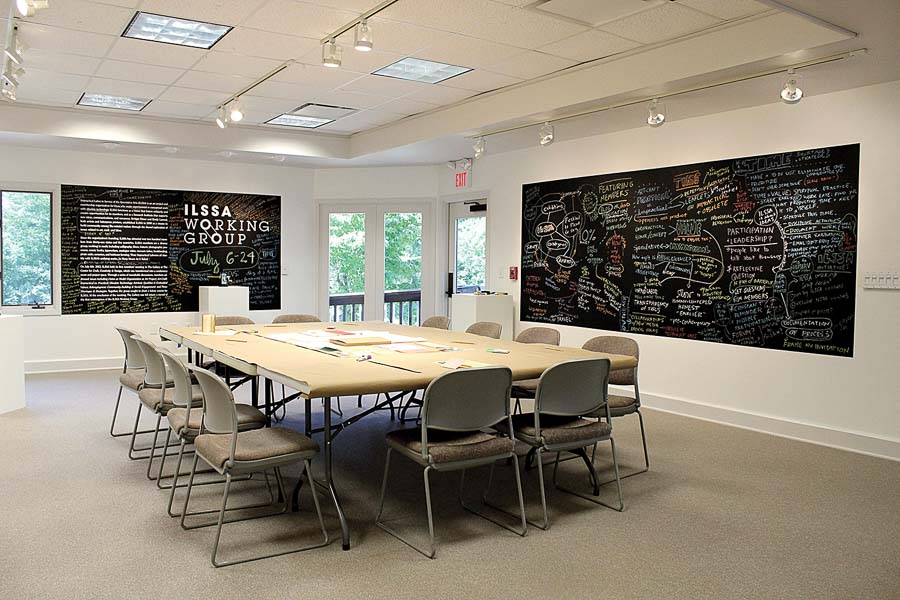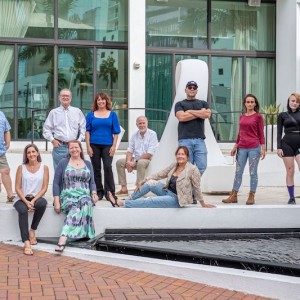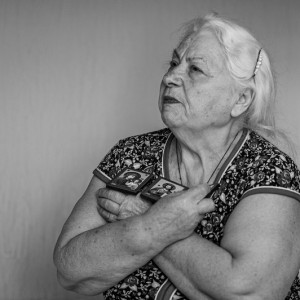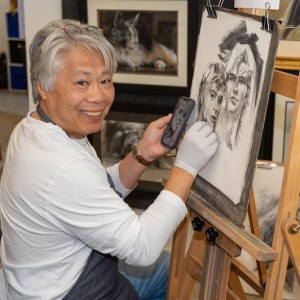THOUGH THE SARASOTA MUSEUM of Art may not be open quite yet (still on track for a January 2019 opening), the campus of Ringling College of Art and Design itself seems to take on a bit of a museum-like quality this semester with a whole host of exhibitions and interactive installations opening in galleries across the grounds. The show begins Jan. 9, when the college takes part in Sarasota Glass Weekend 2018 with the opening of Cast, Cut and Cold in the Basch Gallery, featuring the work of artists such as Peter Bremers, Vadlec Ciglar and Irene Frolic, and bringing collectors and studio glass enthusiasts to the gallery and the new glass facilities at the Basch Visual Arts Center. Fewer than two weeks later, the Patricia Thompson Gallery unveils the exhibition Katie Dobson Cundiff – Modern Impressionist Painter, celebrating the work of the internationally known wildlife illustrator and painter.
And that’s just the beginning.
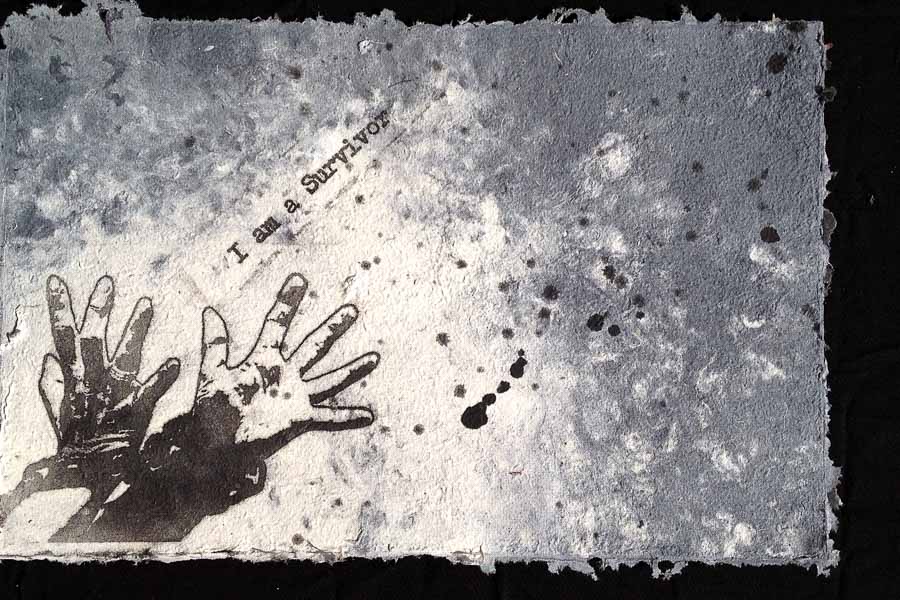
Two ambitious exhibitions open on Jan. 12, including one from the Peace Paper Project, an international organization of socially minded artists using traditional papermaking techniques as art therapy and community engagement. In addition to past artwork, artifacts and associated ephemera on display (many on loan from the Project’s living archive at Yale University), Peace Paper Project Co-founder Margaret Sheppard will be offering papermaking workshops and exercises specific to the Ringling College environment.
As a process, making paper in the traditional way can be both meditative and transformative, says fellow Peace Paper Project Co-founder Drew Mattot. Not only is the process repetitive and mechanical, lending itself to introspection, but the fundamental nature of the act—breaking something down to its component parts in order to create something new from it—holds a powerful, almost alchemical effect. Mattot studied papermaking in college, but it wasn’t until he brought these skills home to his family that he saw their true impact.
His father and uncle, previously close, were two more home front casualties of the Vietnam War, falling out over the political division and never reconciling. When his father died, Mattot made a book to hold his father’s poems and artwork, holding it all together with paper he made himself, and gave it to his uncle. His uncle broke down crying. “At that moment, I realized that paper-making was about more than a surface to print on,” says Mattot. “The process can have a profound impact on someone’s life and help them come to terms with something they’ve lost or experienced.” Another turning point came when a veteran brought his uniform to a workshop and asked to make paper from it. As he and Mattot pulped, they talked, and the man hoped the experience would help him leave his old life behind and integrate into civilian life.
And what started for Mattot as a series of weekend papermaking workshops in Burlington, VT, has today grown to encompass an international project—The Peace Paper Project—with 40 studios across the globe, from all over the United States to countries as far-flung as Australia, Belarus, Ukraine, Turkey and Iran, where people make paper from their memories and take new ownership of their experiences. Mattot has even traveled to teach refugees from Syria and Afghanistan, who make paper from the clothes they wore fleeing ISIS or the Taliban.
“What we do is transform articles of clothing with personal or social significance into paper as a sign of resilience,” says Sheppard, who, in 2012, developed the Peace Paper Project initiative, Panty Pulping, in response to sexual and domestic violence. Turning underwear into paper seemed a bold way to make that statement, she says. A survivor herself, and hearing too many similar stories from those around her, Sheppard wanted a way to create solidarity, to bring survivors together in a safe environment and try to transform trauma into something else. “This process is so accessible and can really activate a sense a creativity people didn’t know they had,” she says. And she wanted to let everyone else know that this was an issue that needed solving. Arriving at Ringling College in March, Sheppard will not confine herself to Panty Pulping (now called Underpaper, to be more gender-inclusive), but lead talks and teach a variety of papermaking workshops, collaborating with the college’s creative writing and printmaking classes for Ringling-specific creations. “In a nutshell,” she says, “we’ll be promoting consent culture and healthy relationships, as well as awareness and support for non-binary students.”
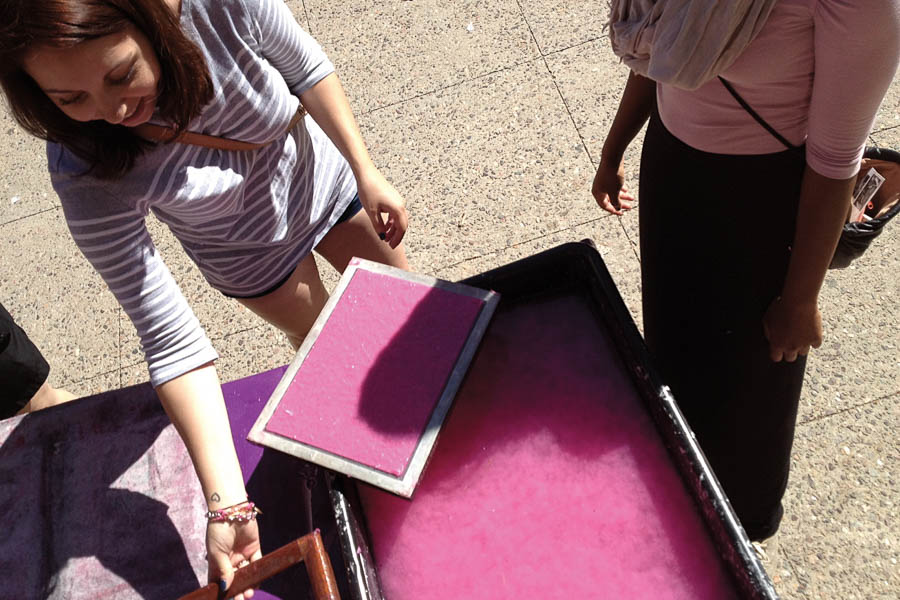
Meanwhile, across campus in the Lois and David Stulberg Gallery, something a bit more lighthearted takes shape with As Many Hours As It Takes: 10 Years of Impractical Labor. A retrospective of sorts, the exhibition takes a closer look at the oddball and off-the-wall community projects from Impractical Labor in Service of the Speculative Arts (ILSSA).
At its heart, ILSSA represents an inversion of values. In stark contrast to the international rat race, where everything is determined by efficiency, market returns and the end result, ILSSA asks its members to remember that their time on this floating cosmic rock is severely limited and there remains a virtue in enjoying the present. In short, the journey matters. “Instead of trying to find the most efficient way to do something,” says ILSSA Founder Emily Larned, “it’s choosing the process that feels the most enjoyable and meaningful.”
It may seem indulgent or hippy-dippy, but acceptable examples of impractical labor abound, such as quilting or knitting. Blankets and sweaters could much more easily be found at any number of retail outlets, but there remains something special about the process and going through that process. “They’re choosing to engage with the materials,” says Larned. The speculative side presents in the organization’s constant search for new paths to explore with their impractical labor. To set out into uncharted territory, “instead of always following a pattern.” The goal isn’t Luddite stagnation—to mindlessly but enjoyably engage in these processes ad infinitum—but to find ever more ways that these processes can weave into daily life. Larned herself leans toward the letterpress, finding joy in the slow and methodical nature of setting type, as well as the contained nature, reusing and rearranging pieces to create a new outcome instead of starting from scratch. “It’s not about novelty,” she says. “It’s about making something new with what’s already here.”
Through ILSSA, Larned’s finding like-minded laborers across the country. Members join for a small yearly fee and in return receive invitations to participate in the year’s projects, as well as various ephemera and products of those “call-and-response” projects. At Ringling College, Larned will display much of these artifacts from ILSSA’s past 10 years, but also debut a new project called Implements, which is not so much site-specific as it is population-specific. Each willing visitor participates by filling out a simple form identifying what they deem to be “essential tools for living,” (the definition of “tools” in this case being expanded to include everything from a crowbar to a philosophical concept). In addition to explaining why, participants also rate their access to this essential tool. Turning the form into Larned and her crew, forms are reproduced with a risograph and left in great paper towers in the exhibition. Visitors are then encouraged to take a copy of whatever forms speak to them, allowing for the gallery community as a whole to raise its voice in defense/support/solidarity of what it deems essential.
Of course, people have to participate honestly for it to work. “That’s the goal and I think most people do that,” says Larned. “There are always responses that are more flippant or fun, but most people engage on an emotional and honest level. These things are time-consuming. For someone to do it, they want to get something out of it.”





